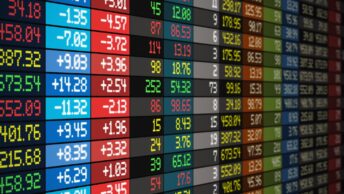Are you ready to try swing trading? Think of it as a trading style that’s less stressful than day trading and a comfortable way to benefit from stock market price fluctuations.
It involves buying and selling assets like currencies or stocks over a short duration of a few days to several weeks. The goal is to aim for short-term price movements instead of waiting months or years for trading.
Traders benefit from short-term price movements and enjoy greater returns than some long-term investments provide. Swing traders typically rely on indicators for swing trading.
If you’re interested in learning more, we can help. Here are 4 key swing trading indicators for 2023.
1. Relative Strength Index (RSI)
RSI helps identify overbought and oversold assets in the market. You calculate RSI by comparing the average gains and losses of an asset over time.
The range for RSI is 0 to 100. An above 70 reading indicates an overbought asset. An under-30 reading indicates an oversold asset.
Swing traders use RSI to identify the best entry and exit points. RSI is customizable, so traders can adjust the period to match their preferences and trading style.
2. Bollinger Bands
Bollinger bands are volatility indicators. Traders use them for identifying trend reversals or potential breakouts.
This involves plotting two standard deviations above or below the moving average. When volatility increases, the standard deviation widens.
When volatility decreases, the standard deviations narrow. Bollinger Bands are useful for identifying ideal entry and exit points.
Traders customize Bollinger Bands by adjusting the standard deviation and time period to fit their preferences and trading styles.
3. Fibonacci Retracement
This is another tool that swing traders use for identifying support and resistance levels in the trading market. It’s based on the Fibonacci sequence, a naturally occurring mathematical sequence.
With this swing trading strategy, traders identify high and low points for a particular asset’s price movement. Then, they draw horizontal lines at key levels which indicate areas of support and resistance.
These levels include:
- 23.6%
- 38.2%
- 50%
- 61.8%
- 100%
Fibonacci Retracement allows swing traders to identify key entry and exit points. It’s customizable to fit the swing trader’s preferences and trading style.
4. Moving Average Convergence Divergence (MACD)
The MACD is a trend-following swing trading indicator. You calculate MACD when you subtract the 26-day exponential moving average or EMA from the 12-day EMA.
The signal indicator line or 9-day EMA is plotted at the top of the MACD line. Swing traders favor MACD for identifying bullish and bearish crossovers.
Bullish crossovers occur if the MACD line crosses above the signal line, which signifies a possible uptrend. A bearish crossover happens if the MACD line crosses under the signal line, which indicates a potential downward trend.
Traders customize elements of MACD and adjust time periods to fit their preferences and trading style.
Understanding Swing Trading Indicators
Swing trading is a popular trading style for beginner and seasoned traders. Swing trading indicators are useful and can help you benefit from price fluctuations in the stock market.
If you’re new to swing trading, it’s always best to get the advice of an established financial professional. Financial expert and daily YouTuber Michael Silva analyzes the highs and lows of the market every day.
Check out Michael’s podcast and blogs. Become a member of Figuring Out Money with Michael today.







